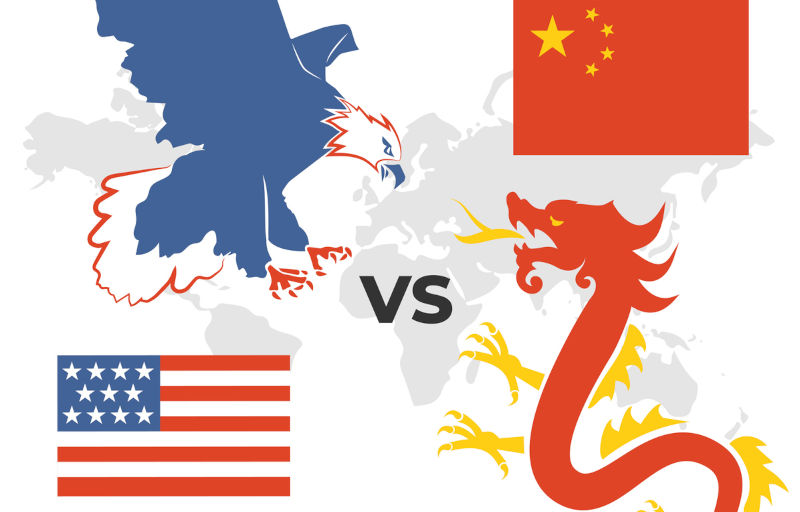The US and China are at the forefront of new AI-imbued military technology development, and are the world’s undoubted leading military powers. But, while the US struggles to recruit highly educated personnel to its military; in China, out of over one hundred thousand recruits in 2022, 80% are tertiary educated, with more than half holding bachelor’s degrees. Will this trend affect the military balance between the US and China as weaponry and battlefield management gets more technology-intensive?
The protracted Russo-Ukraine War goes into eighteen months with no resolution in sight. Meanwhile, the nature of warfare has entered an era marked by the 4th industrial revolution in technology, with a new array of disruptive, game-changing weapons and battlefield management approaches emerging and on display in Ukraine. Military analysts are busy analysying the new warfare paradigm. What lessons have been revealed?
The 1990-91 Gulf War highlighted the importance of integrating traditional fireworks into the then-emerging integrated C4ISR (Command, Control, Communication, Computers, Intelligence, Surveillance and Reconnaissance) system, supplemented by the nascent precision striking cruise missile. The 39-country military coalition led by the US suffered only 147 killed in action; and killed, wounded and captured an enemy of more than three hundred thousand.
The Russo-Ukraine war has not only refined this firepower, C4ISR and precision weapon warfare to a new height, but has also witnessed the appearance of massive AI-driven autonomous drones on the battlefield and the engagement of low earth orbit satellites providing real-time battlefield details to the commanders and soldiers. We have seen soldiers from both sides holding portable consoles and engaging in fighting.
The war has delivered an unmistakable message to all watchers. The new generation of warfare has expanded from the traditional land-sea-air to include cyberspace and outer space. New technologies are increasingly being integrated into traditional weapons, and new weapons are being developed. To handle more complex weaponry calls for new generation military service members with technical expertise to handle the weaponry. The technical competence of military personnel will increasingly become a critical factor in future warfare.
It is never easy to gauge the technical competence of a country’s military. Much less to predict the battlefield performance of a military in handling new weapons. Factors such as a good training program and the design of a new weapon itself can easily affect field performance in a real war. However, one can glimpse the enlistment educational level of a country’s military as a proxy to make an educated guess about an all-volunteer force. We look particularly at the case of the US and China enlistment in recent years. These two countries are at the forefront of new AI-imbued military technology development and are the world’s undoubted leading military powers.
The state of US military enlistment in recent years:
The US ended military conscription and became an all-volunteer force after leaving Vietnam in 1973. Every military branch has had problems meeting its recruitment target ever since, and the situation has worsened in recent years. NBC News reported a record-low percentage of young Americans eligible to serve and an even smaller fraction willing to consider enlistment.
It is reported that only 23% are qualified in 2022 to serve without a waiver to join, down from 29% in recent years, with many more young men and women than ever disqualified for obesity, drug use or criminal records. A Defence Department survey found that only 9% of young Americans eligible to serve were inclined to do so. 57% of respondents think they would have emotional or psychological problems after serving in the military. Middle-class parents today often encourage their kids to go to college before selecting a career, which hurts military recruitment.
Two other trends also hurt recruitment efforts. The 2021 annual Reagan National Defence Survey found that just 45% of Americans had great trust and confidence in the military, down 25% since 2018. Also, only 13% of eligible recruits had parents who had served in the military, down from 40% in 1995. It is known that parents are one of the biggest influencers for joining the military.
Military records show that out of 1.3 million service members in 2021. Two-thirds hold senior high school qualifications, 15% finish a bachelor’s degree, and 8.2% get a higher one.
The military is taking measures to remedy the recruitment crisis. It is reviewing some of the more than 250 disqualifiers for service, including medical conditions that have historically required recruits to obtain a waiver for service or keep a person out of service completely. It also offers unprecedented signing bonuses, up to $50,000, to recruits and re-enlistment for certain specialities.
The state of Chinese military enlistment in recent years:
The Chinese military enjoys a privileged position in society, as the phrase coined by Mao Zedong shows, “Political power grows out of the barrel of a gun.” Since 2018, the number of annual tertiary educated applicants to the military has exceeded a million annually. Out of over one hundred thousand recruits in 2022, 80% are tertiary educated, with more than half holding bachelor’s degrees. The selection ratio reveals the quality of the soldiers joining the Chinese military must be the cream of the society.
The Chinese military experts attributed the surge in quality applicants to six reasons: (1) The percentage of university graduates in a cohort has significantly increased in recent years, China now graduates more than thirteen million tertiary level students every year out of a cohort of sixteen million; (2) The job market for a fresh graduate is getting competitive, and a military career is becoming attractive; (3) The compensation for a soldier today has improved significantly, and veterans benefits in terms of continuing education, job prospect and social welfare is better than ever; (4) Changing the recruit from an annual exercise to bi-annual has enticed more people to apply; (5) The recruitment now tilts toward STEM students or graduates and provides incentives for aspiring military enthusiast to join the services; and, (6) The traditional reverence for the military in China has enjoyed a resurgence in recent years.
How the quality of the recruits affects the military balance between the US and China is something nobody can tell at this moment. But it is certainly something to watch as weaponry and battlefield management are getting more technology-intensive.

Henry Chan
Dr Henry Chan is a Visiting Senior Research Fellow at Cambodia Institute for Cooperation & Peace. His research focuses are Development Economics, China’s Economic Development, ASEAN and China, the 4th Industrial Revolution, Monetary Economics, Digital Transformation and Climate Change.
